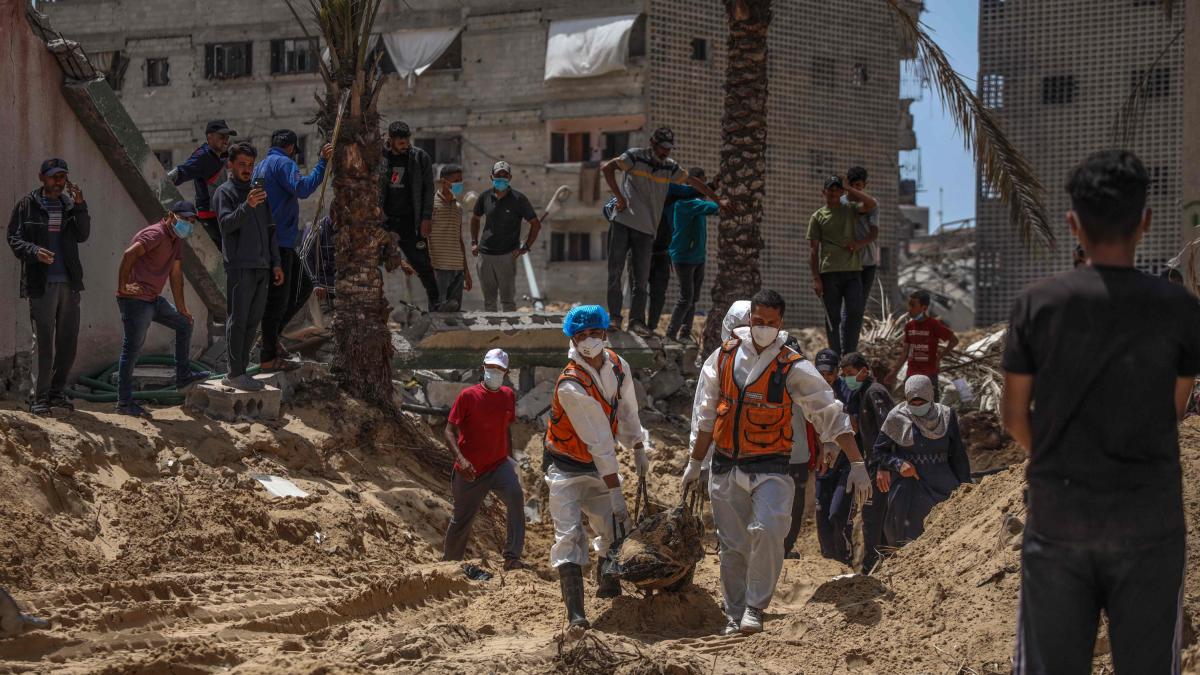Violence between settlers and Palestinians has clearly increased. The attackers are mostly settlers.
Al-Mufagara, West Bank
Cock rumbles in a small village. A goat peeks out of the cattle shelter. The sun is scorching from the cloudless sky.
Behind the country idyll, another reality is revealed: all the windows of modest dwellings are broken, as are the windows of cars.
Tuesday afternoon three weeks ago, September 28, will be permanently remembered by the villagers. At the time, dozens of Jewish settlers and radicals attacked al-Mufagara, located in the southern part of the Hebron Hills in the Israeli-occupied West Bank Palestinian Territory.
The rocks flew and the sticks swayed. The windows were broken, the tires of the vehicles were punctured and the water tanks were tarred. Four sheep died of stabbing.
A total of twelve villagers and three settlers were injured, though not severely. Three years old Muhammad Bakir Mahmud Hammadi was asleep when a stone thrown through the window hit his head.
He has already gotten out of the hospital, but the wound is still visible under his dark hair.
Three-year-old Muhammad was asleep as a stone thrown by the attackers flew through a window into his head.
Settlers the attack on al-Mufagara is one of many acts of violence against Palestinians in the West Bank. Violence has clearly become more common this year.
In the first nine months of the year, the UN Office for the Coordination of Humanitarian Affairs (OCHA) counted 353 attacks on settlers, killing three Palestinians and injuring 122 people.
According to UN findings, settler violence has moved from the proximity of settlements to Palestinian villages. The pace of attacks has accelerated since The Prime Minister of Israel Naphtali Bennett the government was formed last June.
Similarly, more Israeli civilians have been injured in Palestinian attacks in the West Bank. This year, 63 Israeli civilians have been injured, up from 16 last year.
al-Mufagaran village manager Mahmud Hammadi, 75, calls the attack three weeks ago the most dangerous to experience.
“For the first time, settlers invaded our homes.”
Hammadi is the grandfather of the injured little boy and has lived at the same angles of his age.
“At one point in the afternoon, a couple of settlers started throwing stones at our sheep and one of our village’s shepherds who ran to the village to get help.”
The Palestinians began throwing stones back. The situation escalated rapidly. Dozens of masked men and boys, al-Mufagara, began to rush to al-Mufagara from two Israeli settlements a few hundred meters away.
The Jewish settlements in the West Bank are contrary to international law. Many of them have Israeli approval, but even Israel considers Avigail and Maon illegally built.
The village of Al-Mufagara consists of modest houses.
Al-Mufagaran residents say Israeli soldiers watched the attack from the sidelines and fired tear gas at the Palestinians if they came close.
The attackers blocked a nearby road so that the Palestinians could not call in auxiliary forces. The incident lasted a couple of hours.
Eventually, six settlers and one Palestinian were arrested by Israeli security forces.
Case shocked NGOs buy advertisements on the sides of buses with pictures of injured three-year-old Muhammad, Minister of Defense Benny Gantzista and the Israeli Minister of Internal Security Omer from Bar-Levi. The ads called for an end to the violence caused by the settlers.
However, the bus companies quickly removed the ads. NGOs believe the removal was driven by pressure from right-wing Jewish organizations.
In any case, the brutality of the case also aroused the Israeli government.
“Such an attack is a terrible terror,” the foreign minister commented Jair Lapid, to be taken from the revolving Prime Minister ‘s portfolio by Naftali Bennett in August 2023.
West Bank is divided into zones, some controlled by the Palestinian Authority and some by the Israeli army. The village of Al-Mufagara is located in the territory of the Israeli army.
The village is classified as an army training area, and therefore the army wants to evict the villagers elsewhere.
The water and electricity lines are cut off. Electricity comes from solar panels, and water must be transported to the village in containers.
The village is home to 22 families, about 120 people, who raise sheep and goats or work outside the village.
“The inconvenience with the settlers began after the Oslo Accords,” says village manager Mahmud Hammadi.
The 1993 Oslo Agreement set the goal of a two-state solution, the creation of an independent Palestinian state.
“There are also good Israelis here, such as these activists,” Hammadi says, referring to the NGOs that help the village.
Settlers also occasionally co-operate with the Israeli authorities. On Monday last week, about 50 settlers attacked the Israeli border police on the West Bank in Yitzhar near Nablus. One police officer was injured.
The settlers became angry when police were removing a tent set up in a closed military area. Police discouraged the attackers with tear gas but did not use heavier anti-riot equipment.
“We knew we were in the Jewish territory,” police told Haaretz.
Violence there are two cases behind the prevalence, the newspaper Haaretz told, citing anonymous security sources.
Last December, an Israeli woman was murdered by Palestinian terrorists. A week later, Israeli police chased a car with stones thrown at Palestinians, and a teenage Israeli boy was killed in the chase.
After the latter incident, the Israeli army reduced its interference in the actions of the settlers.
In June, a video recorded a case in which a colonel took a gun from a soldier near the Maon colony, fired at a Palestinian village, and handed the gun back to the soldier. Neither received punishment.
A longer-term reason for the increase in clashes is probably the increased construction of Jewish settlements in the West Bank. According to EU statistics, the settlements in the West Bank and East Jerusalem were already home to around 650,000 people last year.
There were 170 settlements approved by Israel and 134 built without Israeli approval.
Violence has led peacekeeping NGOs to campaign more vigorously than before.
A few days after al-Mufagara’s attack, NGOs gathered 400 Israelis and Palestinians to demand water pipes to the village. Flowing water enters the adjacent Jewish settlements of Avigail and Maoni.
One of the NGOs involved in al-Mufkara’s water campaign is Combatants for Peace, whose approximately 60 active members are former Israeli soldiers and Palestinian militants. The organization seeks a two-state solution or other mutual agreement to achieve peace.
Combatants for Peace activists protested in early October against the Israeli occupation and for water supply to Palestinian villages in the southern hills of Hebron.
Palestinian Adam Rabee switched from armed resistance to unarmed nine years ago. He is now coordinating the Combatants for Peace water campaign.
“We are constantly supplying water to al-Mufagara and supporting the residents against the settlers with our presence.”
Rabee accuses the Israeli state of favoring the settlements and using them to take the territories away from the Palestinians.
“The occupation of Israel should be brought to an end. That requires international pressure. ”
Palestinian Adam Rabee gave up armed resistance and is now campaigning for water supplies in the village of al-Mufagara.
.
#Middle #East #sleeping #threeyearold #stone #provoked #Israeli #future #prime #minister #attack #Jewish #settlers #West #Bank







